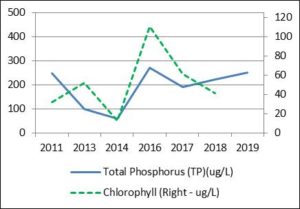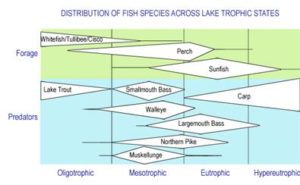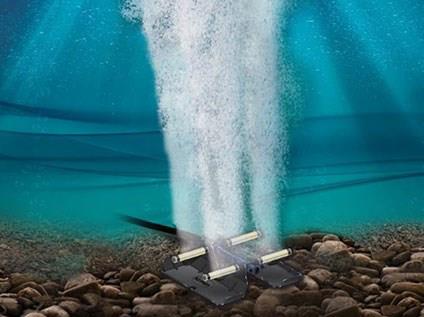Technical assessments by Markham have ident1fied four underlying factors that are impacting the poor water quality conditions in Swan Lake: excessive levels of phosphorus, nitrogen, chloride (from road salt) and low oxygen levels.
- Excessive Phosphorus Levels
The primary issue impacting water quality is considered to be the excessive levels of phosphorus. Phosphorus is a nutrient that supports algae growth that is considered to arise primarily from the large number of Canada Geese that frequent the lake.
An application of Phoslock, a compound that neutralizes the phosphorus, was applied in April 2013 to reduce the level of phosphorus. There was initial success however the effects lasted only two years. By 2016 phosphorus levels had returned to levels in excess of those prior to the Phoslock treatment.
| Algae (Chlorophyll) and Phosphorus Levels | |
 |
This chart illustrates the short term drop in algae levels (as measured by chlorophyll) following the Phoslock treatment in 2013. Chlorophyll, a green pigment in plants used for photosynthesis, is considered a good indicator of the total quantity of algae in a lake.
Eight years after the initial treatment in 2013, a second dosage of Phoslock is planned for the spring of 2021. |
The Phoslock treatment planned for spring of 2021 is an essential first step towards containing the deteriorating water quality issues in Swan Lake. However, Phoslock only addresses phosphorus. Establishment of a stable water quality environment in Swan Lake requires an action plan that addresses the three other major contributors to the poor water quality conditions in Swan Lake:
| 2) Excessive Nitrogen Levels | |
 |
Nitrogen, like phosphorus, is an important nutrient for aquatic life but the excessive amounts in Swan Lake are sufficient to fuel and support excessive algae levels even if phosphorus were eliminated. A program to contain algae must also address the excessive nitrogen levels.
|
| 3) Excessive Chloride (road salt) Levels | |
 |
Chloride levels in Swan Lake are 4-5 times higher than the long term Federal standards. Three road surfaces adjacent to Swan Lake drain directly into the lake. The excessive chloride (from road salt) is sufficient to kill small fish and eliminate zooplankton in the water, natural elements that consume algae. Restoring a healthy zooplankton colony is a building block for a naturally sustainable aquatic environment.
|
| 4) Low Oxygen Levels | |
 |
Low levels of dissolved oxygen reduce aquatic and plant life in the lake and draw phosphorus from the sediments. Improved levels of oxygen are essential to restoration of aquatic animal and plant life that in turn can contribute to a balanced aquatic environment. Source: Fondriest Environmental
|


